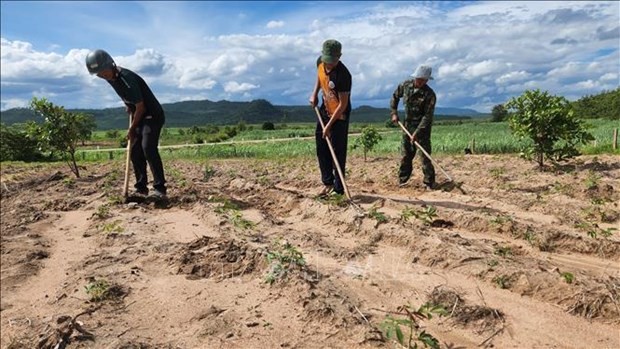
Gia Lai improves living conditions for ethnic groups through national target programme
Latest
 |
| People from ethnic groups in the Central Highland province of Gia Lai is supported in farming. (Photo: VNA) |
Gia Lai is home to 44 ethnic groups, who together account for 46.23% of the province's population.
After one year of implementing the national target programme, the province’s poverty rates based on multi-dimensional criteria among households decreased by 1-1.5% per year; while the poverty rate among ethnic minority households reduced by over 3% per year.
This year, the province is allocated more than 1 trillion VND ( 42.49 million USD) to carry out the national programme.
Gia Lai has used the funding to address the shortage of housing and production land, and clean water for ethnic minority groups, carry out population planning and relocation, develop sustainable agricultural and forestry production, and bring into play the potential and strengths of each areas to produce commodities in the form of value chains. The province also pays attention to preserving and promoting traditional cultural values associated with tourism development.
Chu A Thai commune in Phu Thien district is an example of ethnic minority areas that have benefited from socio-economic development projects.
Nguyen Anh Tuan, Vice Chairman of the district People's Committee said that under the project, the district rearranged its population during the period 2017-2020 and then restructured production.
“Thanks to the support of the authorities at all levels and the consensus of local people, Phu Thien district has completed the construction of new-style rural areas in four ethnic villages - Plei Pong, King Peng, Plei Tro, and Plei Hek,” he said.
The district authorities coordinated with agencies to organise classes in farming and animal husbandry, helping ethnic minority people there gradually change their way of thinking and doing. A total of 225 households were assisted to build barns, while 282 households started to grow vegetables to improve their daily meals, and planted more than 2,570 fruit trees.
The local government also implemented four economic development models including those relating to sugar cane, cassava, cashew, and rice farming in the four villages with a scale of about 100 ha, engaging 115 households.
Rmah Yoh from Plei Hek village, Chu A Thai commune shared that in the past, she and other villagers lived on Cheng Leng mountain and they faced many difficulties.
She said the State has helped them relocate to the current place, where they have a healthcare station and a school. They also receive support to build houses and are given farming land to stabilise their lives.

















